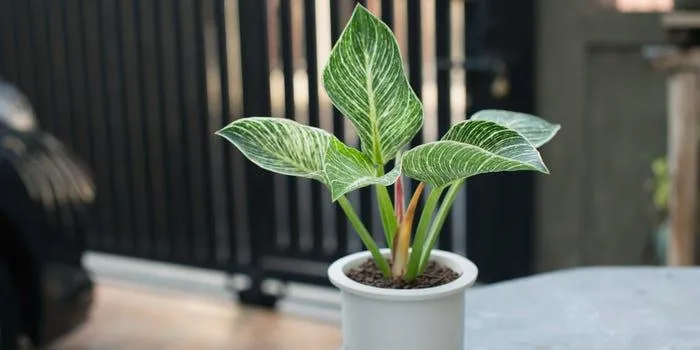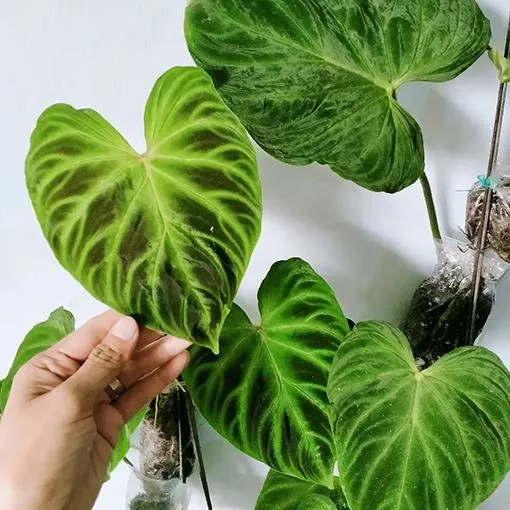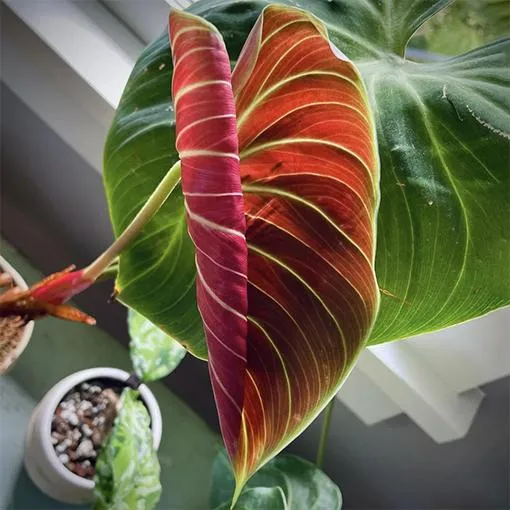Everything You Need to Know About the Philodendron verrucosum ‘Shiny’
The Philodendron verrucosum, commonly known as the shield philodendron or tree philodendron, is a beautifully lush climbing plant native to tropical forests in South America. One particularly stunning variety is the ‘Shiny’ cultivar, which features glossy, waxy leaves that truly sparkle. If you’re interested in adding this showstopper to your indoor jungle, read on to learn everything you need to know about caring for the Philodendron verrucosum ‘Shiny’.
Identifying Features
As the name implies, the striking characteristic of the Philodendron verrucosum ‘Shiny’ is its extra shiny leaves. The leaves emerge bright green with a smooth, glossy texture that almost looks fake or plastic. As they mature, the leaves develop deeper ridges and bumps on their surface, giving them a pebbled or “verrucosum” appearance. But even the mature leaves retain their brilliant shine. They can grow up to 2 feet long by 1 foot wide, making an bold statement!
Growth Habit
Unlike many trailing philodendrons, the verrucosum is a robust climber that searches for surfaces to ascend. In its natural rainforest environment, it uses aerial roots to latch onto tree bark high overhead. As a houseplant, provide a moss pole or trellis for it to climb. It may also send out aerial roots along any surfaces it contacts, so give it space to spread out above the soil. The ‘Shiny’ variety maintains a more compact habit than some other verrucosums.
Light and Temperature Needs
For optimal growth and leaf production, philodendrons appreciate bright, indirect light. South- or east-facing windows provide the perfect illumination. Direct sun could scorch the tender leaves. Temperature wise, daytime highs between 70-80°F and nights no cooler than 65°F suit it best. Too little light will result in leggy growth between sparse leaves, while temperatures below 60°F may cause leaf drop.
Water and Humidity
- Water when the top few inches of soil are dry. Philodendrons generally enjoy consistently moist soil but should never sit in soggy wetness.
- Misting the leaves occasionally provides additional humidity, which this tropical plant appreciates to prevent leaf edge browning or crisping. Pebble trays or a humidifier can help if room humidity is low.
Avoid getting water trapped between the leaves as this can lead to rot. Shake off any excess droplets after watering or misting. Water thoroughly until it drains freely from the holes in the bottom of the pot.

Fertilizer
During the main growing season (spring-fall), feed every 2-4 weeks with a balanced houseplant fertilizer diluted to half or quarter strength. During winter, cut back fertilizer to only once a month or as needed. Too much nitrogen can cause soft, floppy growth.
Potting and Repotting
Use a well-draining potting mix for philodendrons. I like to mix equal parts potting soil, perlite or orchid bark for improved drainage. Repot the plant when it has filled the container with roots emerging from the drainage holes. Squeeze the root ball gently to check for potatoes forming at the edges, a sign it’s time to up-pot. Always use a container with drainage holes only 1-2 inches larger than the current pot.
Pruning and Training
Prune off any damaged or diseased leaves as needed. You can also prune off leggy growth to encourage a fuller shape. Train the aerial roots that form along stems to attach to the support structure for a more tree-like appearance. Tie new growth tips loosely to encourage upward growth. In winter, untie stems to avoid breakage if it droops.
Pests and Diseases
Spider mites can be problematic for many philodendrons. Check undersides of leaves for tiny webs or specks. Isolate the plant and spray with neem oil or insecticidal soap. Mealybugs may also infest. Cut back on watering and fertilizer if yellow or brown leaf tips indicate overwatering. Rotted stems or mushy brown spots signal root rot from too much moisture.
Propagation
Philodendrons are very easy to propagate. Take 4-6 inch stem cuttings with a few leaves, remove the bottom leaves, and place the stem in water. It may take a few weeks but roots will form. Pot up the new plant when a good root system develops. You can also start new plants by removing offshoots or plantlets that form along climbing stems.

Final Thoughts
The Philodendron verrucosum ‘Shiny’ makes a simply stunning statement piece for any home or office. Its extra-glossy leaves really sparkle and demand attention. With the right care – like bright, indirect light and moist soil – this cultivar flourishes as a statement climber. Seeing its dramatic growth over time is incredibly fulfilling. I hope this guide has given you the basics to successfully grow your own shining shield philodendron!
Do you have any other questions before adding this stunner to your collection? Feel free to ask in the comments. I’d be happy to share more care tips and tricks I’ve learned from my own shiny philodendron over the years. With a little TLC, it will dazzle you for many years to come.
Philodendron Verrucosum Care Guide
| Fact | Details |
|---|---|
| Light | Bright indirect light. Too little light causes slow growth and long leggy stems. |
| Temperature | House temperatures 65-75°F. Will tolerate 55-80°F. |
| Water | Allow soil to dry out between waterings. Water when top inch of soil is dry. |
| Humidity | Loves high humidity 50-60%. Can tolerate low humidity if soil remains continually moist. |
| Soil | Any potting mix. Likes humusy well-draining soil that retains moisture. May need occasional dilution of fertilizer mix in water. |
| Pruning | Prune off damaged or straggly growth to encourage bushy shape. Can be propagated from stem cuttings. |
FAQ
-
What is a philodendron verrucosum shiny?
A philodendron verrucosum shiny is a kind of philodendron plant that is known for its glossy, dark green leaves that have a shiny appearance. It’s sometimes called a “wax plant” since its leaves look kinda waxy.
-
Where does it grow?
Philodendron verrucosum shiny is native to tropical parts of Central and South America, particularly regions with humid climates like Costa Rica, Colombia, and Venezuela. So it generally needs warm, humid conditions to thrive.

-
How big does it get?
On average, a philodendron verrucosum shiny can reach heights of around 3-6 feet tall when mature. However, I’ve read that under the right conditions with plenty of light and moisture, it may grow even taller – perhaps up to 10 feet! Its leaves can get pretty huge too at up to 2 feet long.
-
What kind of care does it need?
To care for a philodendron verrucosum shiny, you’ll want to keep the soil consistently moist but not soggy. It likes high humidity levels similar to its natural habitat, so misting the leaves regularly helps. It can tolerate medium to low light but will grow faster with bright indirect sunlight. Be careful not to overwater – these plants are prone to root rot if their feet are too wet.
-
Is it toxic to pets?
Most philodendron species contain calcium oxalate crystals that can cause mouth pain or irritation if eaten by pets. While I haven’t seen any specific reports about philodendron verrucosum shinies being toxic, it’s probably best to assume it could be dangerous if dogs or cats chew on the leaves. Maybe keep it out of reach just to be safe!
-
What are the benefits of having one as a houseplant?
Aside from their gorgeous leaves, philodendron verrucosum shinies are reportedly great at removing toxins from indoor air like formaldehyde and benzene. They may help humidify dry rooms as well. Plus, their tropical vibe can liven up any space and transport you to a luxurious jungle sanctuary right in your own home! So in that sense, they’ve got amazing aesthetical and purifying perks.
-
Do they require pruning or have any pests?
These plants don’t usually need much pruning beyond removing any damaged or dying leaves. However, occasionally pinching back new growth can encourage bushier growth. Scale insects may be a problem occasionally for philodendron verrucosum shinies. So watch out for tiny brown or black spots on the undersides of leaves and treat with insecticidal soap if spotted. Other than that, they can be pretty low maintenance.

